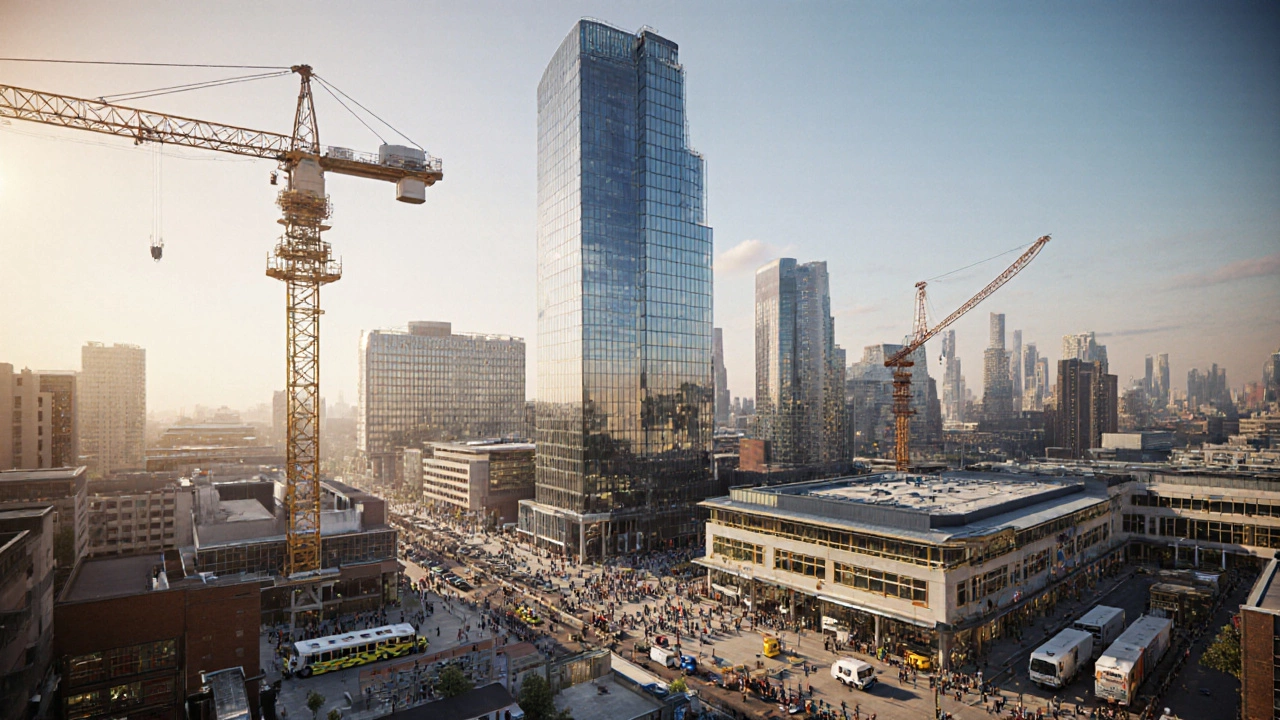What Is Classified as Commercial in Construction?
Learn what makes a building commercial in the UK, the legal definitions, typical types, and why classification matters for compliance, contracts and financing.
When you think of a commercial building, a structure designed for business use rather than living. Also known as non-residential construction, it includes everything from office towers and retail stores to warehouses and hotels. These buildings follow different rules than homes, not just in looks but in how they’re built, licensed, and maintained. The type of commercial building you’re dealing with changes everything — from the materials used to the permits needed and even the kind of wire that holds it all together. At KK Wire Solutions, we see this daily: galvanized wires in a warehouse aren’t the same as those in a shopping mall, and the reason isn’t just strength — it’s code, use, and risk.
There are clear categories under commercial building types, the main classifications used in construction to define purpose, structure, and safety standards. A mixed-use building, a single structure combining retail, office, and sometimes residential spaces. Also known as combined-use development, it’s common in cities where space is tight and efficiency matters. You might find a grocery store on the ground floor and apartments above — but only if the firewalls, electrical systems, and structural supports meet strict separation rules. Then there’s industrial construction, buildings built for manufacturing, storage, or heavy operations. Also known as industrial facilities, it includes factories, distribution centers, and power plants — places where heavy machinery, high loads, and harsh environments demand stronger foundations and more durable wiring. These aren’t just bigger offices. They need reinforced concrete, steel frames, and industrial-grade wire systems that can handle constant vibration and extreme temperatures.
The difference between commercial construction and residential isn’t just size — it’s scale, speed, and stakes. A house might last 50 years with minor updates. A retail center needs to handle thousands of people daily, comply with ADA access rules, meet fire safety codes for exits and sprinklers, and support heavy HVAC systems. That’s why the wire inside matters more than you think. Galvanized wires in a commercial building aren’t just for holding insulation — they’re part of the grounding system that keeps lights on, machines running, and people safe during a storm or fault. And when you mix building types — like adding a gym to an old office tower — you’re not just renovating. You’re re-engineering.
What you’ll find in the posts below are real examples of how these building types shape decisions — from why you can’t just slap wood framing onto a warehouse roof, to how foundation cracks in a retail space cost more than in a home, to why hiring the right contractor means knowing whether you’re dealing with a Class A or Class B commercial structure. No fluff. Just what builders, property owners, and contractors actually need to know to get it right the first time.

16 October
Learn what makes a building commercial in the UK, the legal definitions, typical types, and why classification matters for compliance, contracts and financing.